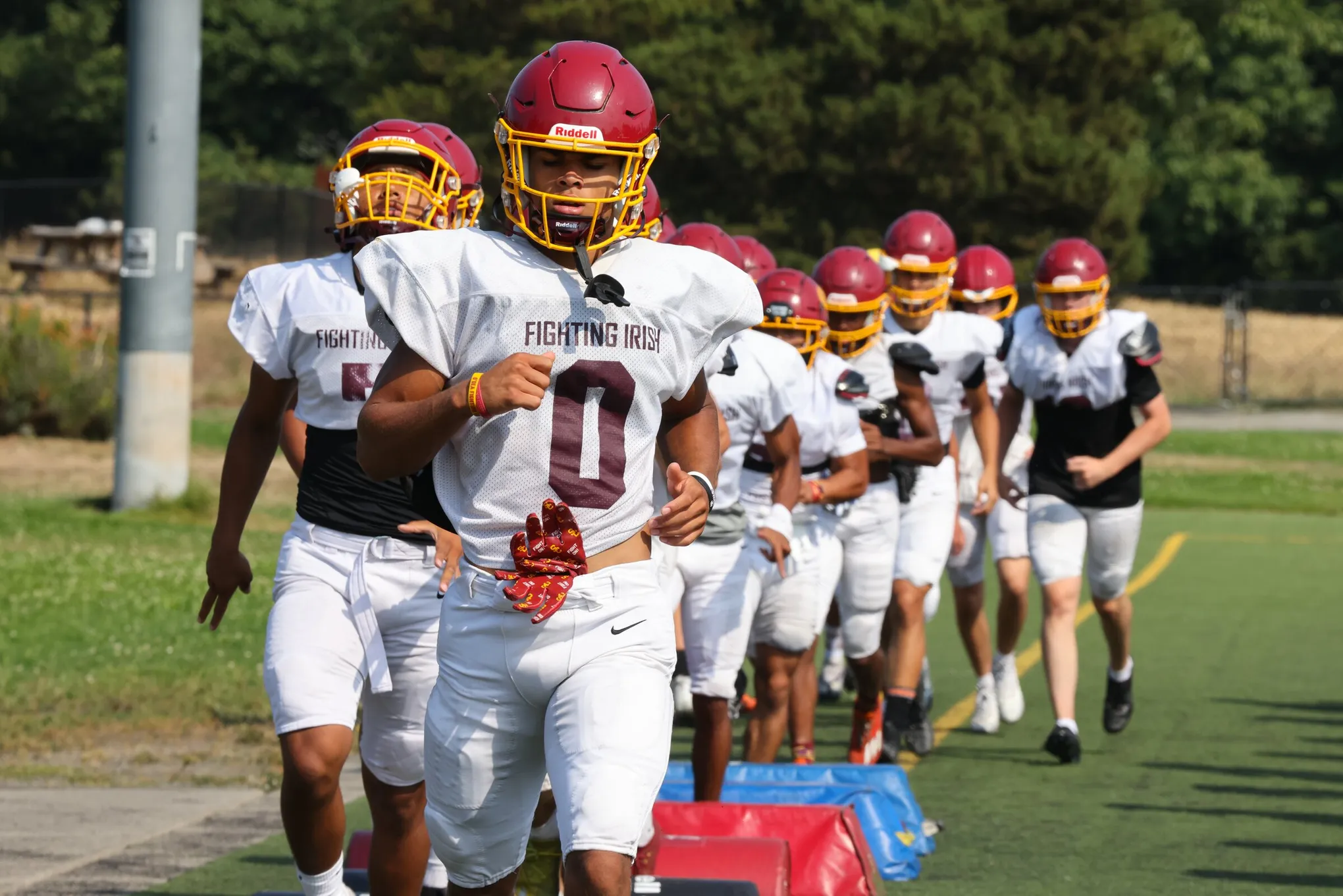
Closing space is essential to maximizing shoulder contact and putting yourself in the best position to limit missed tackles. When a defender effectively reduces the distance between themselves and the ball carrier, they increase their chances of making a strong, controlled tackle. Proper space closure allows for better body positioning, making it easier to execute a powerful near-shoulder strike while reducing the risk of lunging or arm tackling.
Footwork is one of the most overlooked aspects of tackling, yet it plays a crucial role in execution. Proper footwork ensures that defenders can maintain balance and adjust their positioning leading into contact. Strike timing acts as the bridge between good tracking and dominant contact, ensuring that a defender's movement aligns with the ball carrier's path. Without precise footwork and strike timing, even the best tracking efforts can fall apart at the moment of contact.
Shoulder accuracy is key to delivering force while also limiting yards after contact (YAC). By executing a near-shoulder strike to the ball carrier’s near hip, athletes not only generate more power but also reduce unnecessary head contact. Targeting the near hip ensures that defenders are making contact with the most effective part of their body while maintaining control over their tackling form. This approach allows for a cleaner, safer, and more efficient tackle that stops the runner in their tracks.
By focusing on these key traits—closing space, strike timing and footwork, and shoulder accuracy—players can take their tackling skills to the next level. Mastery of these fundamentals not only leads to better on-field performance but also ensures a safer, more effective approach to defensive play.Reduce missed tackles and improve performance through data-driven analysis.
SCHEDULE A DEMOClosing space helps defenders reduce reaction time, improve body positioning, and increase the likelihood of a successful tackle without lunging or reaching. Proper space closure sets up the defender for a controlled, powerful tackle.
Good footwork allows a defender to maintain balance and control leading into contact. Without proper footwork, a player may be off-balance, reducing their ability to generate power and increasing the risk of missed tackles.
Strike timing is the precise moment a defender engages in contact with the ball carrier. Proper timing ensures that the defender maximizes power, maintains control, and limits the runner’s ability to break the tackle.
Shoulder accuracy ensures that a defender makes contact with the most effective part of their body, allowing for maximum force while reducing head contact. This improves both player safety and tackling efficiency.
Drills such as closing space sprints, strike timing reaction drills, and shoulder contact accuracy drills can help players develop these traits. Consistent practice and proper coaching are key to mastering tackling fundamentals.
Take the next step in coaching safer and more effective tackling. Earn your Atavus Tackling Certification today.
LEARN MORE